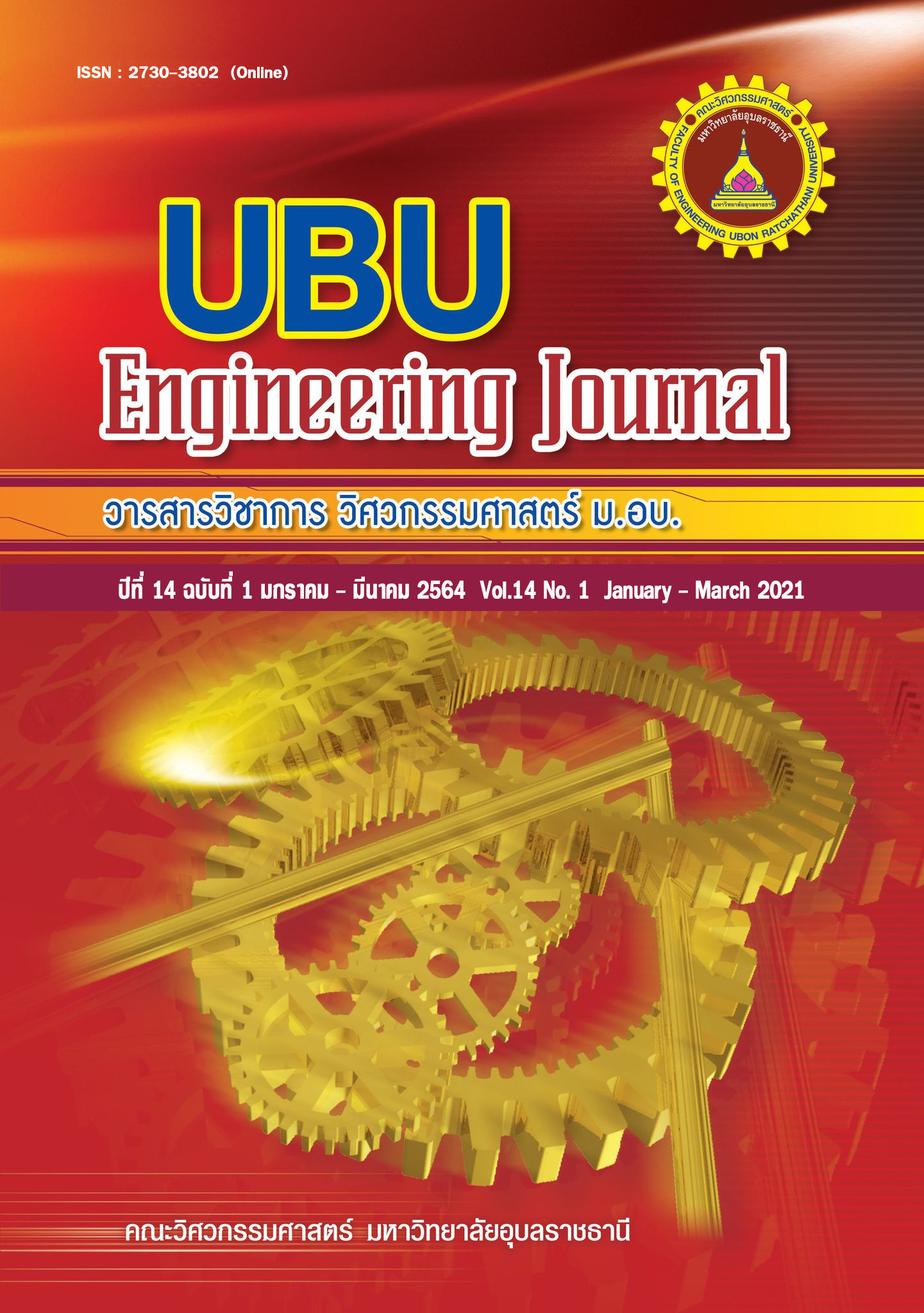Selection of locations and incinerators for infectious waste of hospitals in Northeastern Thailand
Main Article Content
Abstract
In the Northeast of Thailand, there are approximately 1.58 tons of infectious waste a day. Each hospital has very little ability to eliminate the waste by themselves. As a result, most hospitals use agencies to handle it. There is a high cost of carrying the infectious waste from the hospital to the disposal site, since most hospitals are located far away from the infectious waste disposal facility. Therefore, if the infectious waste disposal facility is established at a proper location in the Northeast of Thailand, the hospitals can reduce the transportation cost of delivering the infectious waste to the facility. This research presents the data on the selection of location and the size of infectious waste incinerators for hospitals in the Northeast of Thailand with the objective of minimizing the total costs. The mathematical model of the problem is formulated based on the facility location problem and it is solved by using the AMPL program. The result shows that there are 2 appropriate areas for establishing an infectious waste incinerator in the Northeast of Thailand. The first one is in Kuchinarai District, Kalasin Province, serving 248 hospitals and the other one is in Tha Li District, Loei Province, providing service for 77 hospitals. Both locations use infectious waste incinerators with a waste burning capacity of 600 kilograms per hour and the lowest overall cost is 5,024,726.40 baht per month.
Article Details
References
[2] Barbati M. Models and Algorithms for Facility Location Problems with Equity Considerations [dissertation]. University of Naples Federico; 2013.
[3] Baron for AMPL. Available from:
https://ampl.com/products/solvers/solvers-we- sell/baron/[Accessed 16 May 2020]
[4] Bhattacharya U. A Multi-Objective Obnoxious Facility Location Model on a Plane. American Journal of Operations Research. 2011;1:39-45.
[5] Boyer O, Sai Hong T, Pedram A, Yusuff R, Zulkifli N. A Mathematical Model for the Industrial Hazardous Waste Location-Routing Problem. Journal of Applied Mathematics. 2013; p.1- 10. Article ID 435272.
[6] Department of Pollution ControThailand state of pollution Report 2018.Available from: http://www.pcd.go.th/public/Publications/print_r eport.cfm [Accessed 21 May 2019]
[7] Dimitrijevi B, Ratkovi B, Šelmi M. A multi-objective model for undesirable facility location.. In: Vidovi M, Kilibarda M, Ze«evi C, Miljus M, Radivojevi G.(eds.). 3th Logistics International Conference: 2017 May 25-27: Belgrade, Serbia: LOGIC;2017. p. 19-24.
[8] Drezner Z, Gelfand R, Drezner T. Sensitivity of Large Scale Facility Location Solutions. Journal of Supply Chain and Operations Management. 2019;17(2):157-168.
[9] Energy Regulatory Commission. Regulation of the Energy Regulatory in 2017; Available from : http://www.erc.or.th/ERCWeb2/. [Accessed 2017 May 3].
[10] Fana J, Yu L, Li X, Shang C, Ha M. Reliable location allocation for hazardous materials. Information Sciences. 2019;501:688–707.
[11] Fernández J, Redondo J, Arrondo A, Ortigosa P. A Triobjective Model for Locating a Public Semiobnoxious Facility in the Plane. Hindawi Publishing Corporation Mathematical Problems in Engineering. 2015; P.1-12. Article ID 631872.
[12] Krarup J, Pisinger D, Plastria F. Discrete location problems with push–pull Objectives. Discrete Applied Mathematics. 2002;123:363 – 378.
[13] Maneein J. Infectious waste management of local government of Thailand. [dissertation]. Bangkok: National Institute of Development Administration; 2013.
[14] Rakas J, Teodorovi´D, Kim T. Multi-objective modeling for determining location of undesirable facilities. Transportation Research Part D. 2004;9:2:125–138.
[15] Ratick SJ, White AL. A risk-sharing model for locating noxious facilities. Environment & Planning B, 1988;15:165–179.
[16] Seubsiri K. Survey of Infectious Waste incinerator Management in a Community Hospital in the Upper. Northeast Area
[disscrtation]. Ubon Ratchathani: Ubon Ratchathani University; 2011.
[17] Sresanpila P, Sindhuchao S. Solving the Problem of the Selection of the Size and Multi Depot Location Case Study : Elimination of Infectious Waste of Community Hospitals in the Upper Part of Northeast Thailand. UBU Engineering Journal, 2018;9(1):39-47.
[18] Tarmir A. Locating two obnixious facilities using the weighted maximin criterion, Operation research letters. 2006;34:97-105
[19] Wichapa N, Khokhajaikiat P. Solving multi- objective facility location problem using the fuzzy analytical hierarchy process and goal programming: a case study on infectious waste disposal centers. Operations Research Perspectives. 2017;4:39–48.

